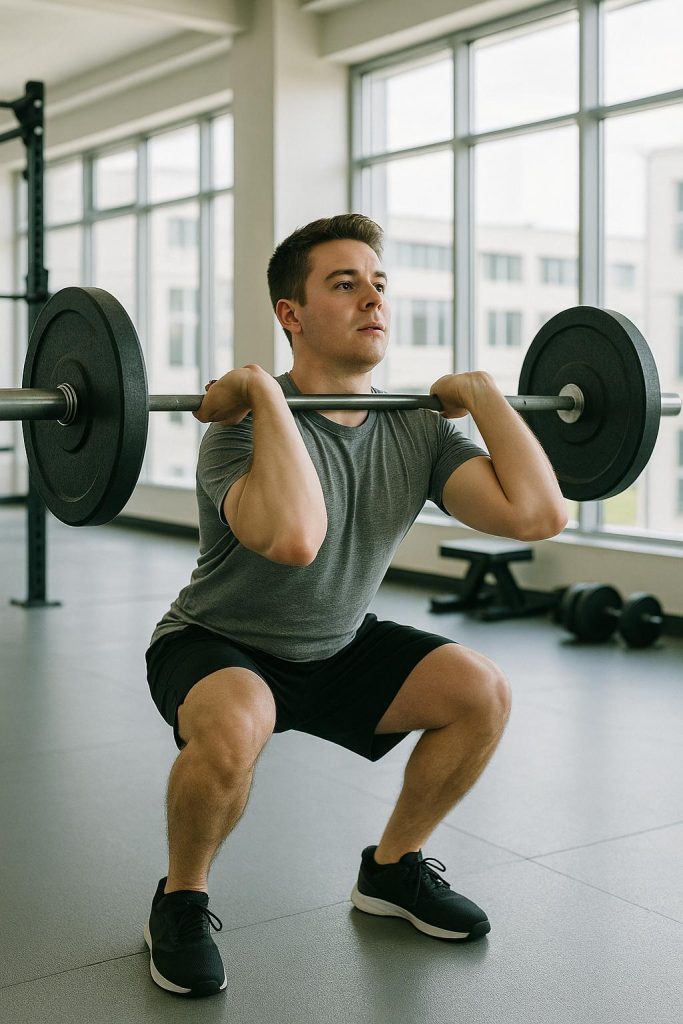Most powerlifters train between 3 and 6 days per week, depending on their experience, goals, and recovery needs. This frequency allows for optimal strength gains, skill development, and injury prevention while keeping the body fresh for consistent progress.
Knowing how often to train is crucial for maximizing strength, ensuring recovery, and preventing burnout. Whether you’re a beginner or an elite athlete, understanding training frequency helps you choose the right routine and avoid common mistakes. In this guide, we break down the best weekly training schedules for powerlifters at every level and explain the science behind them.

How Many Days Do Powerlifters Really Train?
Powerlifting routines are typically structured around 3 to 6 training days per week. Here’s a quick overview:
- Beginners: 2–3 days per week (full-body workouts)
- Intermediates: 3–4 days per week (split routines)
- Advanced/Competitive: 4–6 days per week (specialized programs)
- Elite: Occasionally 6–7 days per week (rare; only for those with exceptional recovery)
Why this range? Training frequency balances skill practice, workload, and recovery. Too few sessions = slow progress; too many = higher risk of overtraining.
According to a 2024 review by Stronger By Science, increasing frequency (up to a point) can boost strength—especially for upper-body lifts. However, more days only help if you can recover and maintain good technique.
Best Training Frequency by Experience Level
Beginners (0–1 Year Experience)
- Recommended: 2–3 full-body sessions per week
- Structure: All major lifts (squat, bench, deadlift) each session
- Example: Monday/Wednesday/Friday or Tuesday/Thursday
Benefits: Allows practice of core lifts, faster recovery, and time to learn technique. Studies confirm beginners gain strength at similar rates with 2 or 3 weekly sessions if the total training volume is matched (NSCA).
Intermediate Lifters (1–3 Years)
- Recommended: 3–4 days per week
- Structure: Upper/lower or push/pull splits
- Example: Monday: Upper, Tuesday: Lower, Thursday: Upper, Friday: Lower
Benefits: Lets you focus on weak points, increase weekly volume, and recover between heavy sessions. A 2022 meta-analysis found that higher frequencies (up to 4 days) may slightly enhance muscle thickness and strength compared to fewer sessions.
Advanced & Competitive Lifters
- Recommended: 4–6 days per week
- Structure: Lift-specific days or Westside/Conjugate-style splits (e.g., ME/DE upper/lower)
- Example: Monday: Squat, Tuesday: Bench, Thursday: Deadlift, Friday: Bench/Squat variation
Benefits: Enables high total volume, technical mastery, and focused accessory work. The Norwegian Frequency Project (2019) showed elite lifters gained more strength training 6 times weekly versus 3 times, with volume kept equal (Menno Henselmans).
Elite Athletes
- Recommended: 5–7 days per week (with caution!)
- Structure: Very high-frequency, variable-intensity programs
- Example: Daily squat/bench, rotating intensities
Warning: Suitable only for those with years of experience, elite genetics, and exceptional recovery strategies (sleep, nutrition, therapy). Even at the top, most lifters benefit from regular rest and deload weeks.
Real-World Powerlifting Splits
| Experience Level | Weekly Frequency | Common Split Example |
|---|---|---|
| Beginner | 2–3 days | Full-body (Mon/Wed/Fri) |
| Intermediate | 3–4 days | Upper/Lower (Mon/Tue/Thu/Fri) |
| Advanced | 4–6 days | ME/DE Upper-Lower or lift-specific |
| Elite | 6–7 days | Daily (rotating intensity & lifts) |
ME = Max Effort; DE = Dynamic Effort (used in Conjugate/Westside Barbell programming)
How to Choose Your Optimal Training Days
- Prioritize Recovery: More days only help if you’re recovering well (quality sleep, nutrition, and low stress).
- Match Frequency to Experience: Beginners thrive on fewer, higher-quality sessions; advanced lifters may benefit from more frequency.
- Monitor Progress: If you’re stalling or getting injured, drop a session and focus on technique or recovery.
- Adjust for Life: Busy week? Don’t be afraid to swap to 2–3 effective sessions instead of missing workouts or rushing.
Recent Research & Policy Updates
- Stronger By Science: Training each main lift at least 2–3 times per week is optimal for most lifters.
- American College of Sports Medicine (ACSM): Still recommends a minimum of 2 non-consecutive strength sessions per week for health and performance (ACSM guidelines).
- New Programs: Popular templates like the Westside Barbell Conjugate continue to recommend four sessions weekly, while “high-frequency” squat routines have gained popularity for advanced athletes.
Frequently Asked Questions
Q: Can I make gains training just 2 times per week?
A: Yes, especially if you’re a beginner and hit all major lifts each session.
Q: Is training 6+ days a week safe?
A: Only for advanced athletes with a solid recovery plan. Most lifters risk injury or burnout if they try this too early.
Q: What’s more important, frequency or volume?
A: Total weekly volume matters most. Frequency helps you distribute that volume effectively and recover better.
Conclusion & Call to Action
Powerlifters usually train 3–6 days per week, with frequency tailored to their experience and goals. Start at the lower end, focus on quality and recovery, and increase days only as your strength and technique improve.
